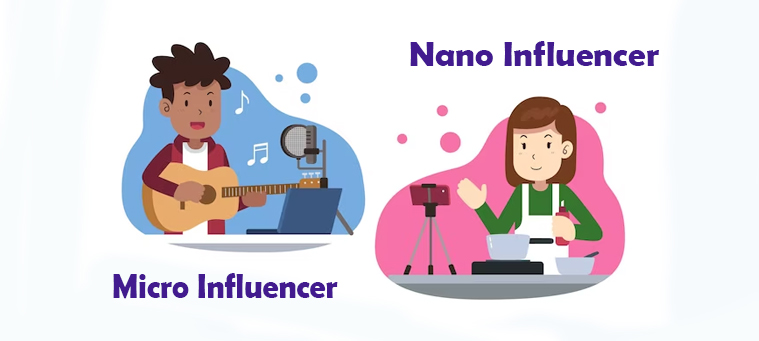
YouTube influencer marketing involves collaborating with popular content creators to promote your brand, products, or services to their engaged audience. This approach leverages the trust and credibility that influencers have built with their followers, allowing brands to tap into established communities and reach potential customers in a more authentic way.
The benefits of YouTube influencer marketing are significant. According to a study by Influencer Marketing Hub, businesses earn an average of $5.20 for every $1 spent on influencer marketing. Moreover, 92% of consumers trust influencer recommendations over traditional advertising. These statistics highlight the potential impact of well-executed influencer campaigns on YouTube.
Understanding YouTube Influencer Marketing
Before diving into specific strategies, it’s crucial to understand the different types of YouTube influencers and their potential impact on your marketing efforts.
Types of YouTube Influencers
- Micro-influencers (1,000 – 100,000 subscribers): These creators often have highly engaged niche audiences and can offer excellent value for targeted campaigns.
- Macro-influencers (100,000 – 1 million subscribers): With a broader reach, macro-influencers can help boost brand awareness and credibility.
- Mega-influencers (1 million+ subscribers): These top-tier creators offer massive exposure but often come with a hefty price tag.

Image: YouTube influencer tiers infographic
Each type of influencer has its advantages and challenges. For instance, while mega-influencers can provide extensive reach, micro-influencers often boast higher engagement rates and more dedicated followers. A study by Markerly found that as an influencer’s number of followers increases, their engagement rate tends to decrease.
Identifying the Right YouTube Influencers
Finding the perfect influencer for your brand is crucial to the success of your campaign. Here’s how to approach this process:
Define Your Target Audience
Start by clearly defining who you want to reach. Consider demographics such as age, gender, location, interests, and purchasing behavior. This information will guide your search for relevant influencers.
Research Relevant Influencers
Use YouTube’s search function, Google, and social media platforms to find influencers in your niche. Look for creators who consistently produce content related to your industry or product category.
Evaluate Influencer Metrics
When assessing potential partners, consider the following metrics:
- Subscriber count: This indicates the influencer’s overall reach.
- View counts: Look at average views per video to gauge actual audience size.
- Engagement rates: Calculate likes, comments, and shares as a percentage of views.
- Video watch time: This metric shows how well the influencer retains viewer attention.
Image: YouTube Analytics metrics screenshot
Assess Authenticity and Brand Alignment
Beyond numbers, evaluate the influencer’s content style, values, and audience demographics. Ensure they align with your brand’s image and target market. A misalignment can lead to ineffective campaigns or even damage to your brand reputation.
Developing a YouTube Influencer Marketing Strategy
With the right influencers identified, it’s time to craft a comprehensive strategy for your campaign.
Set Clear Campaign Objectives
Define specific, measurable goals for your campaign. Common objectives include:
- Increasing sales: Set a target for revenue or units sold.
- Generating brand awareness: Aim for a certain number of impressions or reach.
- Driving website traffic: Set goals for click-through rates and site visits.
- Increasing leads: Define targets for email sign-ups or contact form submissions.
Create a Comprehensive Influencer Brief
Develop a detailed brief that includes:
- Product information: Key features, benefits, and unique selling points.
- Messaging guidelines: Core messages to convey and any specific language to use or avoid.
- Target audience details: Help the influencer understand who you’re trying to reach.
- Desired actions: What you want viewers to do after watching the video.
- Brand voice: Guidelines on tone and style to maintain brand consistency.
- Video style preferences: Any specific formats or creative direction you’d like to see.
Choose the Right Collaboration Type
Select a collaboration format that aligns with your goals and the influencer’s strengths. Options include:
- Product reviews: In-depth examinations of your product or service.
- Tutorial videos: Step-by-step guides showcasing how to use your product.
- Day-in-the-life vlogs: Natural integration of your product into the influencer’s daily routine.
- Sponsored content: Dedicated videos about your brand or product.
- Affiliate marketing: Providing tracked links for the influencer to earn commissions on sales.

Image: influencer collaboration types comparison
Best Practices for Successful Campaigns
To maximize the effectiveness of your YouTube influencer marketing efforts, follow these best practices:
Allow Creative Freedom
While it’s important to provide guidelines, allow influencers creative freedom to present your brand in a way that resonates with their audience. Their authentic voice is what makes influencer marketing so powerful.
Emphasize Authenticity and Transparency
Encourage influencers to be honest about their experience with your product. Authenticity builds trust with viewers and can lead to more genuine engagement.
Ensure FTC Compliance
Make sure all sponsored content is clearly disclosed according to Federal Trade Commission (FTC) guidelines. This typically involves verbal mentions and written disclosures in the video description.
Foster Long-Term Relationships
Building ongoing partnerships with influencers can lead to more authentic promotions and better results over time. Consider multi-video deals or brand ambassador programs for sustained impact.
Measuring Campaign Success
Tracking the right metrics is crucial for understanding the impact of your influencer marketing efforts and optimizing future campaigns.
Key Performance Indicators (KPIs)
Monitor these essential metrics:
- Views: Total number of times the sponsored video was watched.
- Engagement: Likes, comments, and shares as a percentage of views.
- Click-through rate: Percentage of viewers who clicked on provided links.
- Conversions: Number of desired actions completed (e.g., purchases, sign-ups).
- Return on Investment (ROI): Revenue generated compared to campaign costs.
Use Analytics Tools
Leverage YouTube Analytics and third-party tools to gather comprehensive data on your campaign’s performance. Many influencer marketing platforms offer built-in analytics features to streamline this process.
Optimize and Iterate
Use the insights gained from your campaigns to refine your approach. A/B test different types of content, calls-to-action, and influencer partnerships to continually improve your results.
Bottom Line
YouTube influencer marketing offers a powerful way to connect with your target audience through trusted content creators. By carefully selecting the right influencers, developing a comprehensive strategy, and following best practices, you can create impactful campaigns that drive real results for your brand.
Remember to stay flexible and adaptable in your approach. The YouTube landscape is constantly evolving, and what works today may need adjustment tomorrow. Keep an eye on emerging trends, such as the growing importance of short-form content like YouTube Shorts, and be ready to incorporate new strategies into your influencer marketing playbook.

